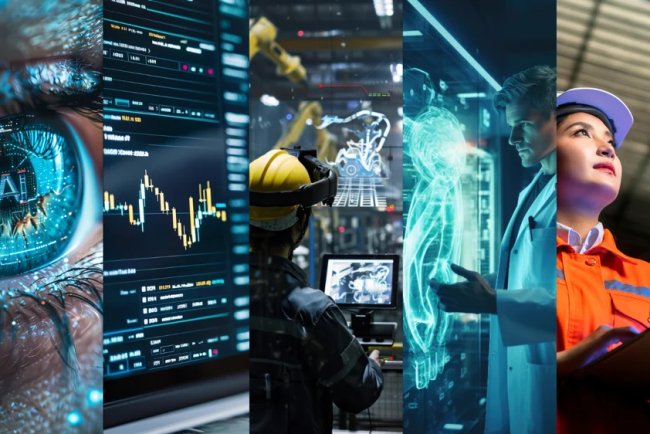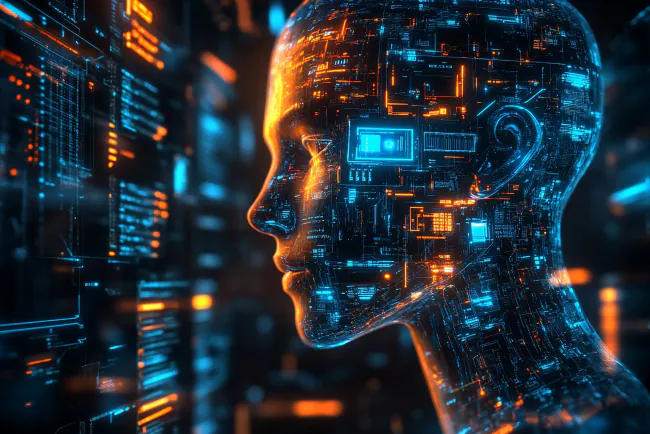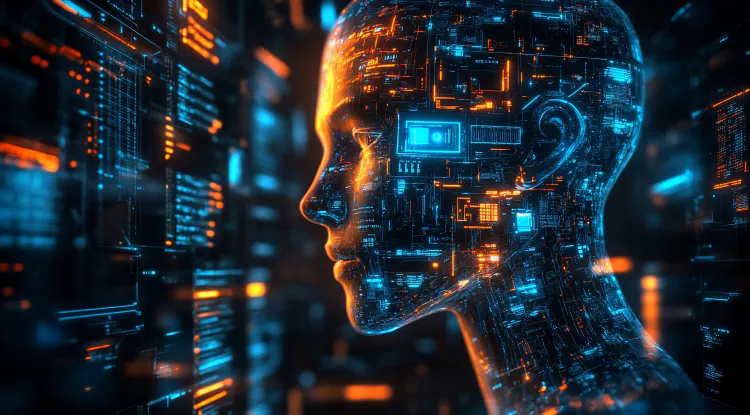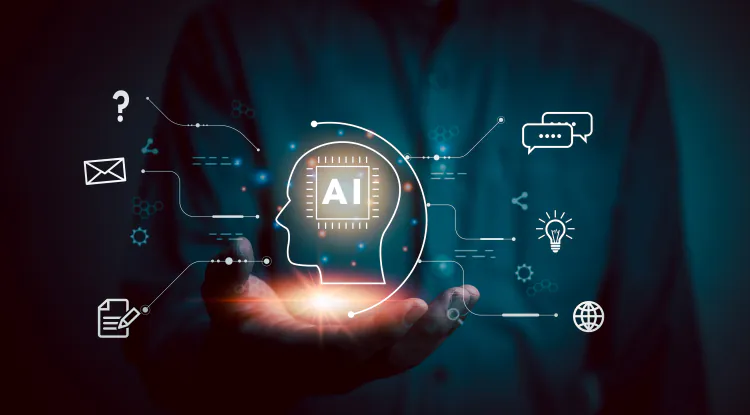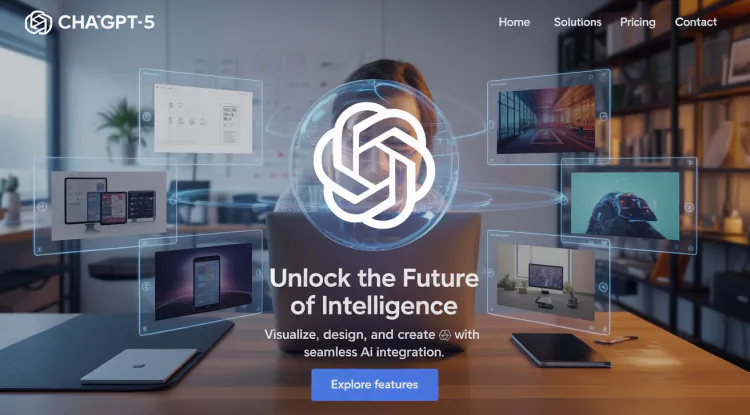The Future of Connection: Mark Zuckerberg’s Vision for AR, AI, and the Next Era of Human Interaction
Imagine this: You’re in Delhi, your brother is in Toronto, and yet you’re both sitting across from each other at your family’s dining table—talking, laughing, catching up. Not through a screen, but through a shared holographic space enabled by your smart glasses. Sounds like science fiction? According to Mark Zuckerberg, this is not only possible—it’s inevitable.
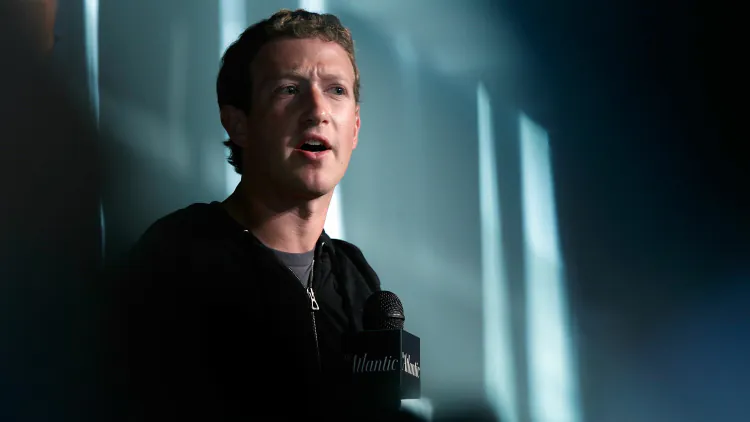
The Meta CEO recently laid out his long-term vision for the next frontier in technology: a powerful mix of augmented reality (AR) and artificial intelligence (AI). At the heart of it is a simple, deeply human goal: to make people feel more connected.
In his series of conversations and platform announcements, Zuckerberg shared a future where holographic glasses, personalised AI assistants, and context-aware communication tools come together to redefine what it means to be present—digitally and emotionally.
This article explores that future in detail, contextualises it for Indian users, and reflects on how we can prepare for this major shift in our technological landscape.
The Post-Smartphone Era: A New Computing Platform Is Emerging
Over the past decade, smartphones have revolutionised how we communicate, work, shop, learn, and even express ourselves. But Zuckerberg now believes we are on the cusp of moving beyond the smartphone era.
The next phase? Augmented reality glasses powered by AI.
Meta’s Ray-Ban smart glasses—currently in their second generation—already allow users to take photos, listen to audio, and interact with Meta AI in real-time using just their voice. Sales for these glasses have reportedly tripled in the past year, indicating growing public interest in hands-free, immersive technology.
But this is just the beginning.
Meta is working on an advanced prototype codenamed Orion, which includes full holographic capabilities, sleek design, and a neural wrist interface that lets users interact with virtual elements using subtle hand movements and even neural signals. According to Zuckerberg, these glasses aim to be lightweight, stylish, and as intuitive to use as smartphones are today.
He envisions a world where these glasses become your go-to device—replacing screens, keyboards, and traditional interfaces altogether.

Presence Over Productivity: Redefining How We Connect
What sets this technological leap apart is the intended focus. Unlike previous computing waves that prioritised productivity or entertainment, Zuckerberg says the primary goal of AR + AI is to enhance social presence.
The current digital experience, for all its convenience, often feels flat and impersonal. Video calls, while effective, still lack the nuance and depth of in-person interaction. The rise of digital communication has, ironically, made many feel more disconnected than ever.
This is the emotional gap Meta wants to close.
With AR glasses, Zuckerberg envisions people meeting in immersive shared spaces—holographic coffee shops, virtual workrooms, even family living rooms. Instead of merely watching each other on screens, people would feel like they are truly in the same room. Body language, eye contact, gestures—all of this would be captured and transmitted in real time.
This concept of "presence" is central to Zuckerberg’s vision. He believes it could transform everything from business meetings to remote education to long-distance relationships.
A Future Built on Personalised AI
Augmented reality is just one part of the equation. The other critical element is artificial intelligence, which brings context, intelligence, and customisation to the experience.
Zuckerberg introduced the idea of "personal superintelligence"—an AI assistant tailored to you, running in your smart glasses and designed to understand your unique context. This AI will not just answer your questions, but help you navigate your day, anticipate your needs, and support your communication and creativity.
Why glasses? Because, as Zuckerberg explains, they allow the AI to see and hear from your point of view. This spatial awareness makes the AI more helpful—whether it’s summarising a conversation, guiding you through a recipe, or helping you navigate a new city.
Meta’s vision positions the AI as a constant, unobtrusive companion—less like a chatbot and more like a silent partner in your daily life.

Addressing the Decline in Social Bonds
One of the most powerful aspects of Zuckerberg’s vision is its recognition of a disturbing trend: the decline of meaningful human relationships, especially in digitally connected societies.
Surveys conducted in the U.S. and echoed in global studies show that people are reporting fewer close friends, more loneliness, and decreased participation in real-world community life. Digital connection, for all its advantages, has not replaced the warmth of face-to-face relationships.
Zuckerberg believes that if used thoughtfully, AR and AI can actually reverse this trend. By enabling richer, more immersive interactions—especially when physical distance is a barrier—technology can bring people closer.
This aligns deeply with Indian social values. In a culture where relationships, family ties, and emotional presence are highly valued, the idea of using technology to preserve and enhance those bonds is not only relevant but urgent.
The Learning Curve: Will AI Replace Struggle?
With AI simplifying tasks from translation to coding to design, one concern raised in Zuckerberg’s discussions is whether we risk losing the benefits of struggle and effort—particularly for children and young learners.
His response is nuanced. While AI can undoubtedly assist with many tasks, it should not replace foundational learning. For example, while an AI might write code or solve a math problem for you, understanding the underlying logic is still essential.
Struggle, in this view, is not something to be eliminated, but supported. The goal is to make learning more accessible—not effortless. In schools across India, where pressure to memorise often outweighs understanding, AI tools could encourage a more interactive, supportive approach to education—provided they are used with intent.

Real vs. Virtual Identity: The Role of Avatars
Another aspect of this future involves the evolution of avatars—digital representations of ourselves in virtual environments. Meta’s approach is to allow a blend of styles. Some users may prefer photorealistic avatars that mirror their actual appearance, while others may opt for stylised, cartoon-like versions.
Zuckerberg argues that this flexibility is important for comfort and identity. In many cases, people feel more expressive and authentic when not confined to their real-world appearance. This is especially true in India, where issues like gender expression, caste dynamics, and body image can create real-world limitations on self-expression.
By allowing users to present themselves however they choose in virtual environments, Meta hopes to create a more inclusive and emotionally resonant digital experience.
Open Source, Privacy, and the Ethics of AI
One of the most discussed aspects of Meta’s AI strategy is its commitment to open source models. Zuckerberg argues that transparency is essential to building trust in AI systems. Open models can be audited for bias, modified for local contexts, and improved by a global developer community.
This open approach also benefits countries like India, where regional languages, cultural norms, and infrastructure challenges require customisation. Open AI allows local developers to build solutions that reflect the specific needs of Indian users.
However, open models also raise concerns about misuse. Meta is investing in moderation tools and usage guidelines, but the long-term success of this model will depend on responsible implementation by the broader ecosystem.
Privacy is another critical issue. Smart glasses, by design, capture visual and audio data from their environment. This raises ethical questions about consent, surveillance, and the potential misuse of personal information. In a country like India, where digital privacy laws are still evolving, these concerns are particularly pressing.

Indian Context: What This Future Means for Us
India stands at a unique intersection. It is home to the world’s largest youth population, one of the fastest-growing digital markets, and a society rooted in relational values. This makes it both an ideal testing ground and a complex challenge for technologies like AR and AI.
In rural areas, immersive education could change the future for millions of children. In cities, AI-powered glasses could redefine urban productivity, from office work to e-commerce logistics. For families scattered across geographies, holographic connection could preserve traditions, rituals, and emotional bonds.
However, these benefits will not arrive automatically. We need thoughtful regulation, inclusive design, and public awareness to ensure that these tools empower rather than exploit.
Preparing for the Shift: A Call to Conscious Tech Culture
The future Zuckerberg outlines is compelling, but also deeply dependent on how we choose to implement it.
We must ask:
- Will AR and AI bring us closer, or make us more dependent on digital simulations of real life?
- Will smart glasses improve access and equality, or deepen the divide between the tech-savvy and the rest?
- Can personalised AI help us be more human, or will it diminish our need for critical thinking?
These are not just questions for technologists. They are questions for educators, parents, policymakers, and everyday users.
India has the talent, scale, and cultural wisdom to shape this future responsibly. The tools are coming—what we do with them is up to us.

Conclusion: Toward a More Connected Tomorrow
Mark Zuckerberg’s vision is grand in scope, but grounded in a very human need—the desire to feel seen, heard, and connected.
If realised with care, this future of smart glasses and personalised AI can restore what our current devices often take away: presence, intimacy, and empathy. It is not about replacing the human touch, but making it possible across distances.
As India continues to grow as a digital nation, we have the opportunity—and the responsibility—to help build a world where technology uplifts relationships, not replaces them.
It’s time we stopped thinking of tech as cold, distant, and transactional. The future, if we build it wisely, can be warm, social, and deeply human.
What's Your Reaction?








